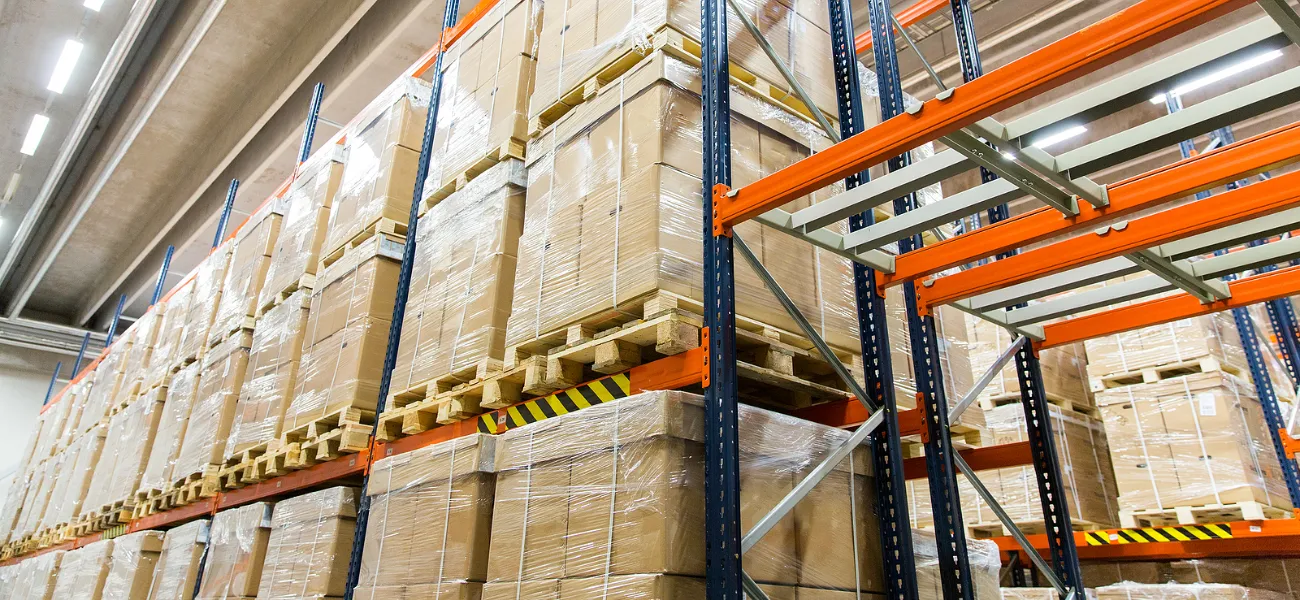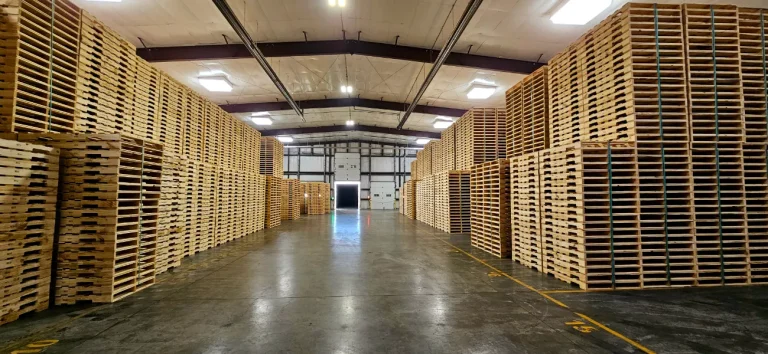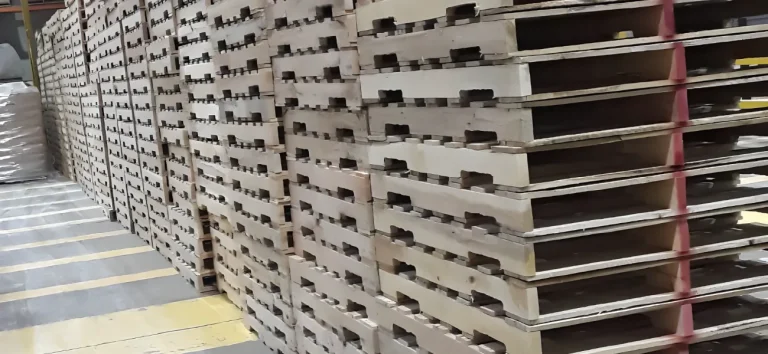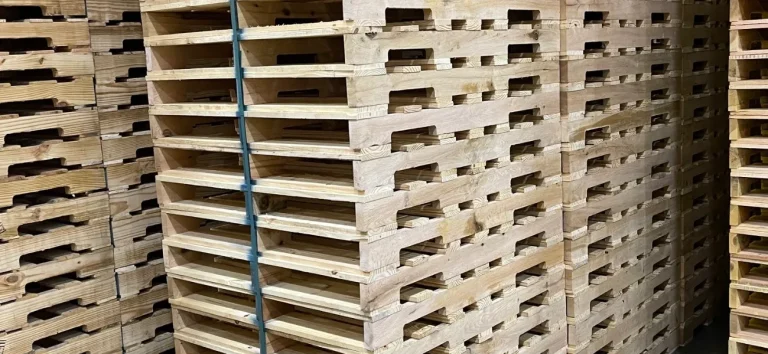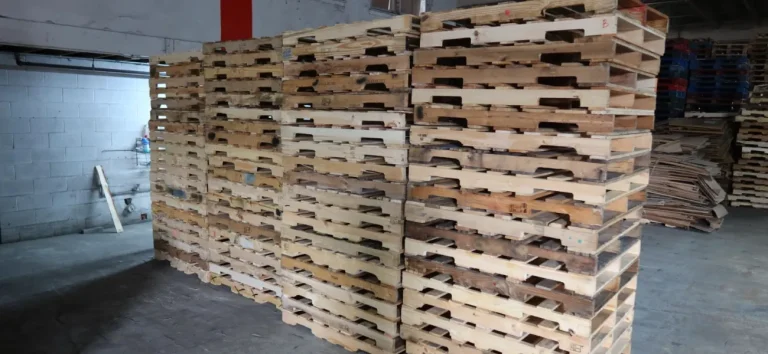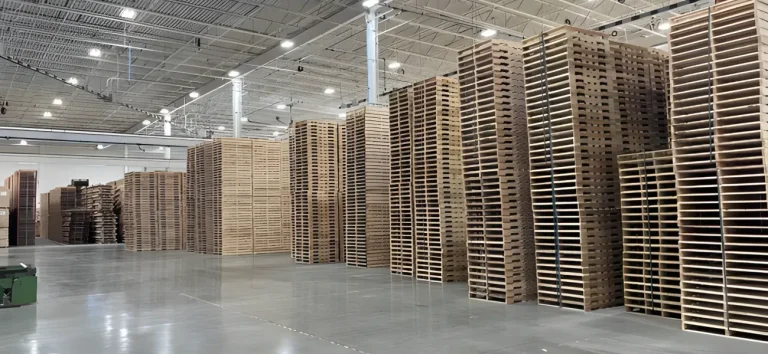Pallets and Automation: What You Need to Know to Avoid Disruption
Warehouse automation has changed the game. From conveyor systems and robotic palletizers to AS/RS and autonomous mobile robots, businesses are investing heavily in automation to drive speed, accuracy, and cost efficiency.
But as many operations have learned the hard way, your automated system is only as good as the pallets feeding it.
Pallet inconsistencies—whether in size, shape, or structural integrity—can disrupt even the most advanced warehouse technologies. In fact, subpar pallets are one of the most commonly overlooked sources of downtime and error in automated environments.
At PalletMaxx, we understand that pallet quality isn’t just about durability—it’s about precision, consistency, and compatibility. Here’s what you need to know if you’re relying on (or planning to implement) automation in your operation.
Automation Is Built for Consistency—But Most Pallets Aren’t
Automated systems are designed with the assumption that inputs are consistent. A robotic arm doesn’t “eyeball” whether a pallet is slightly warped. A conveyor doesn’t “adjust” if a stringer is misaligned. These systems expect every pallet to meet exact tolerances.
And when they don’t?
-
- A warped or uneven pallet can jam a conveyor or get rejected by an AS/RS shuttle.
- Deckboard gaps or inconsistent spacing can confuse robotic sensors.
- Broken stringers or poor-quality recycled wood can collapse under weight or throw off loading systems.
- Inconsistent pallet height or overhang disrupts stacking, retrieval, and handling.
Even a minor deviation from spec can result in hours of downtime, expensive troubleshooting, or worse—damage to high-value inventory and equipment.
The Cost of a Bad Pallet in an Automated Environment
While it’s easy to think of pallets as low-cost, low-priority items, their failure in an automated facility can have high-stakes consequences.
Imagine a conveyor system processing 300+ pallets per hour. One defective pallet causes a jam, halting the line. Staff must clear the jam, reset equipment, inspect for damage, and reroute product. Meanwhile, outbound shipments get delayed and your SLA performance takes a hit.
That’s not just an operational hiccup—it’s a supply chain failure, and it’s avoidable.
What Makes a Pallet Automation-Ready?
To keep automation running smoothly, pallets must meet tighter specifications than in traditional manual-handling environments. Key attributes include:
-
- Consistent Dimensions: Length, width, height, and deck spacing must fall within tight tolerances. No warping, no overhangs.
- Uniform Build Quality: Board placement, stringer alignment, and nail patterns must be consistent across loads.
- Smooth, Sensor-Friendly Surfaces: Pallets with broken boards or jagged edges can cause false sensor readings.
- Load-Bearing Integrity: Every pallet must hold up under dynamic and static load conditions without sagging or breaking.
- Heat Treatment and Export Compliance: For automation linked to export fulfillment, pallets must meet ISPM-15 standards without compromising structure.
If your pallets vary in spec or source from load to load, your automation will eventually expose the weaknesses.
How PalletMaxx Supports Automated Operations
We work closely with some of the largest, most complex warehouse operations in North America—and we know that automation demands a higher standard.
Here’s how PalletMaxx ensures that every pallet in your system is up to the task:
1. Quality-Controlled Consistency
Every pallet—whether new, recycled, or remanufactured—is built or inspected under strict QA standards. We ensure consistency in materials, construction, and finish so your automation systems run without interruption.
2. Custom Spec Pallets
We build to your specs, not just ours. Whether your AS/RS requires exact 48x40 GMA with specific stringer placement, or your conveyor system can’t tolerate even a ¼" overhang, we deliver exactly what your automation demands.
3. Uniform Supply Across Locations
For multi-site operations, we help standardize pallets across your network so automation performance doesn’t vary by facility. Our national reach and high-volume capacity (over 60,000 pallets/day) make us a reliable partner across the board.
4. Alignment with System Integrators
Planning a new automation rollout? We work with your automation vendors, engineers, and consultants to ensure pallet specs align with your equipment’s tolerances—before you go live.
5. Flexible Options: New, Recycled, or Remanufactured
Need a more sustainable or cost-conscious option? We can deliver remanufactured or recycled pallets that still meet automation-grade specifications—lowering cost without compromising performance.
Planning for Automation? Don’t Overlook the Pallet Factor
If your company is investing in automation, don’t let pallet inconsistency be the weak link.
Involve your pallet partner early. Waiting until a system is installed—only to find that your existing pallets don’t work—can lead to delays, equipment damage, or expensive retrofits. Whether you’re running conveyors, robotics, AGVs, or storage systems, pallet compatibility is critical to success.
At PalletMaxx, we help you design for reliability, build for precision, and scale for performance.
Conclusion: Automation Demands Better Pallets—We Deliver Them
Your warehouse is evolving. Your pallet program should evolve with it.
Let PalletMaxx help you source the right pallets for your automated systems—consistent, reliable, and built for performance. Whether you’re upgrading a single line or managing automation across multiple sites, we ensure your pallets never slow you down.
Let’s Talk Automation-Ready Pallets
Reach out today for a free consultation or to spec out a pallet program tailored to your automation environment.

